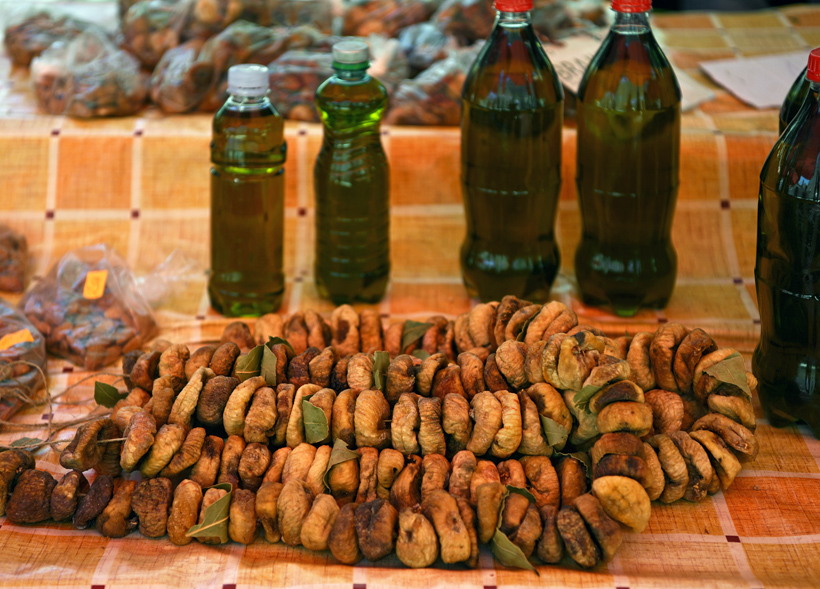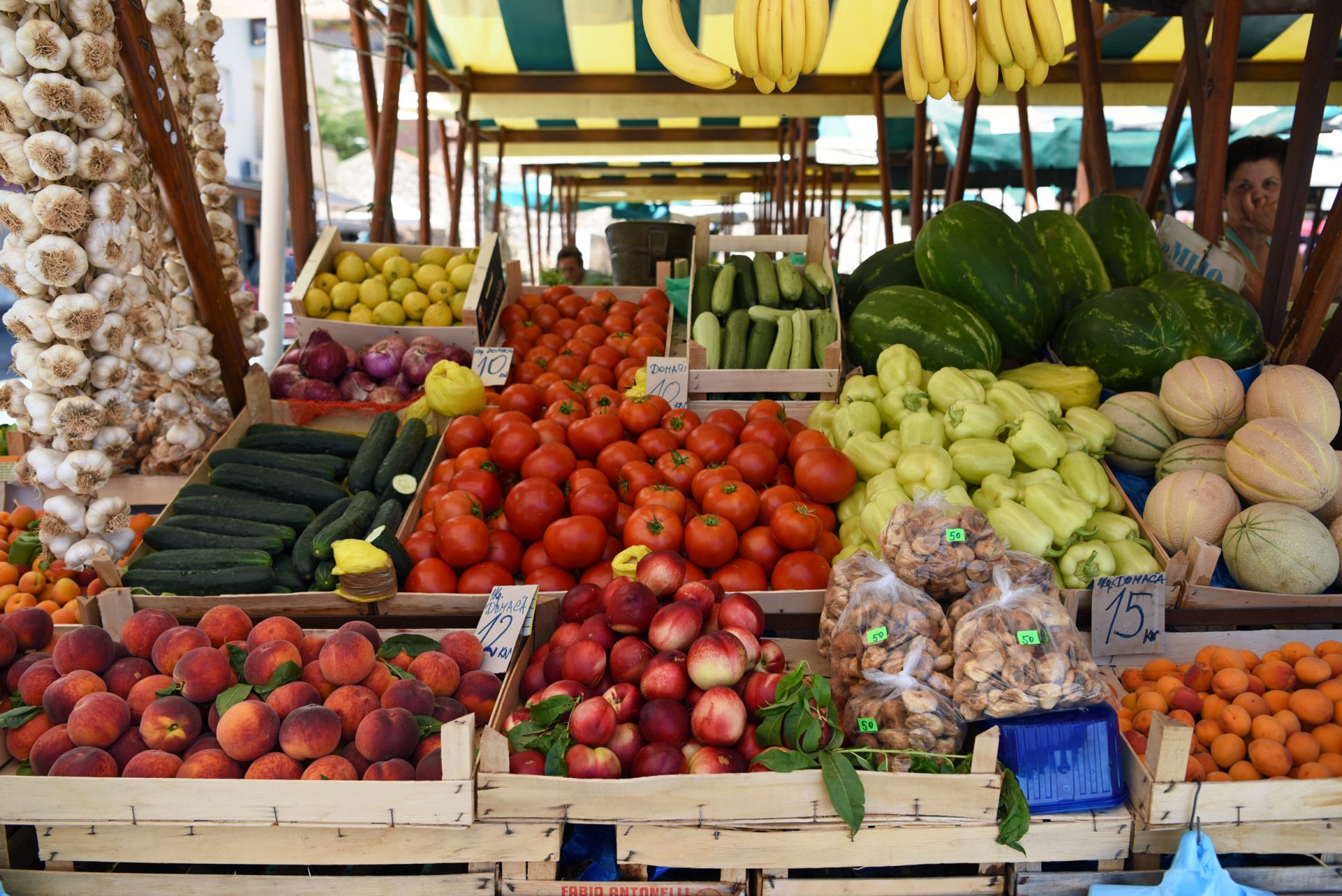Despite the ever-increasing influx of tourists and the growing importance of supermarkets, many towns in Dalmatia still hold daily food markets within the walls of their historic centers. Zadar’s fish and green markets are located on a street under the ramparts – the seafood in a covered hall, and the produce outside nearby. Today, I’ll focus on the green market, and instead of writing clichés about markets and waxing lyrical about Croatian apples and tomatoes, I figured I’d actually talk about fruit and vegetable production in Croatia. If statistics aren’t your cup of tea, you can always just look at the pictures!
A bounty of recent statistics can be found in a report by Wageningen University & Research, called “Business opportunities for Croatian fruit and vegetable growers” (available here). Most of the information below is taken from that report, including the charts.
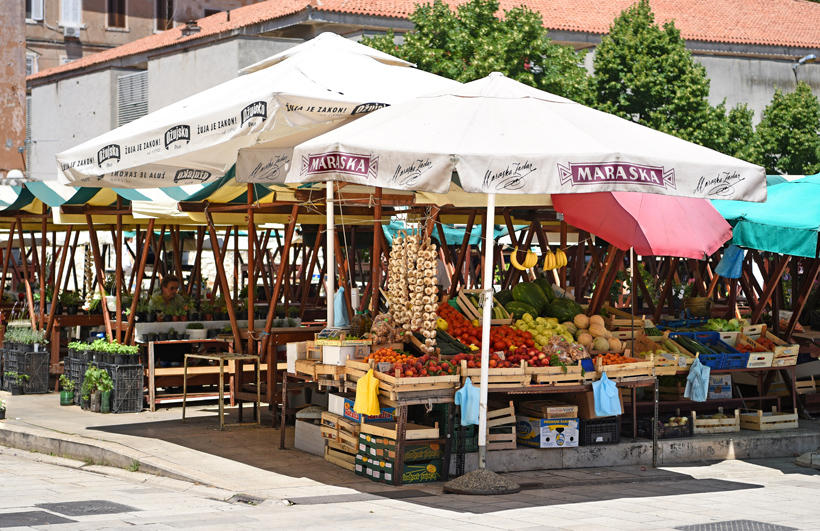
After the collapse of Yugoslavia and the war that ensued, the large agricultural conglomerates favored by the communist regime lost their prominence, but there was no state vision for a new agricultural farm structure. During privatization, the conglomerates were sold off at low prices, then divided up into smaller companies. These companies often suffered from erratic management and didn’t always survive. As a result, to this day the average size of the farms in Croatia is smaller than in many other EU countries. Most farms combine the production of various crops and livestock.
The table below shows some figures for Croatia’s main crops. For the majority of them, exports go mostly to Slovenia, Bosnia and Herzegovina, and Serbia (except apples, which are exported mainly to Egypt). Overall, the country produces fewer fruits and vegetables than it consumes, even for some of its most important crops.
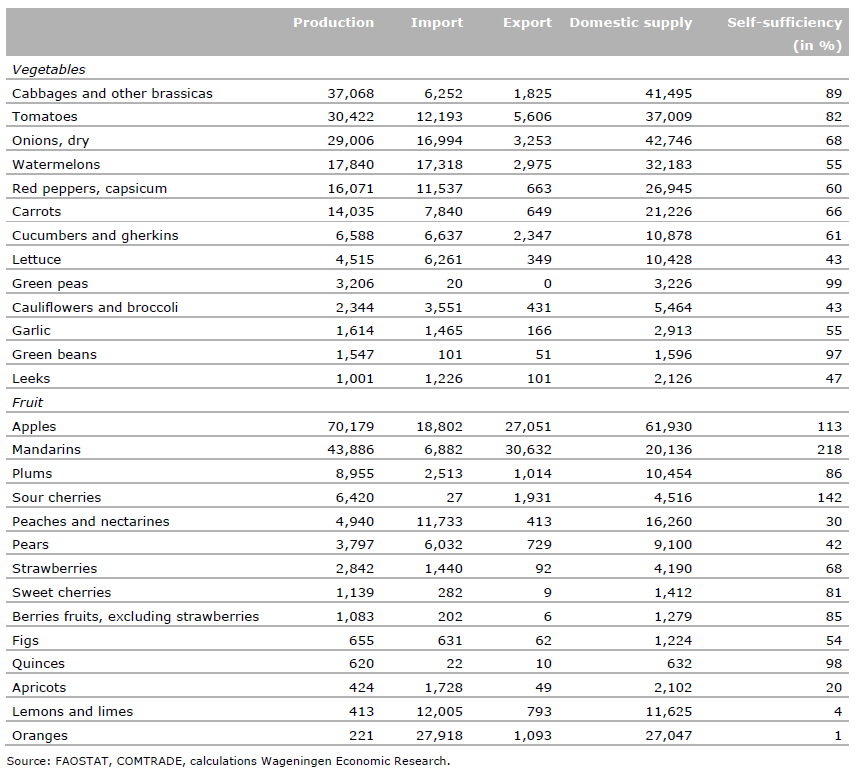

The most consumed vegetables include onions (and garlic), cabbages, tomatoes, bell peppers, carrots, cucumbers, and lettuce. This matches almost perfectly what I’ve captured in these pictures during my visit in the summer of 2017.

The peculiarity of Croatian agriculture partly stems from some strong landraces of vegetables counting among the main crops. For example:
- Croatian garlic is a fragrant landrace with a strong flavor that distinguishes it from garlic from China (Europe’s main supplier). This variety is widely used in traditional dishes, and foreign cooks might want to adjust their proportions.
- For cabbages, in addition to a wide range of varieties known in Europe, some landraces are grown specifically for fermentation, following traditional methods. The Ogulin and Varaždin sour cabbage varieties received European Protected Geographical Indications in 2015 and 2017 respectively.
As for fruits, the most consumed kinds are apples, watermelons, mandarins, peaches (and nectarines), plums, pears, and sour cherries. This again matches pretty closely what I saw on the market stalls, factoring in seasonality (i.e., you won’t see apples or mandarins in early summer).
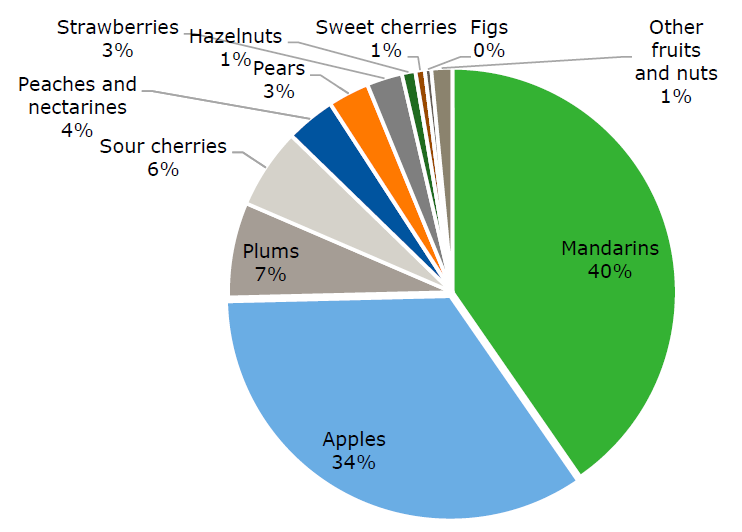
Just as with vegetables, there are several important Croatian fruit landraces:
- By now, if you’ve read my post on the Maraska distillery, you should know everything about the Marasca cherry, an indigenous variety of sour cherries widely cultivated in Dalmatia.
- Mandarins, grown predominantly in the Neretva Valley, are satsuma mandarins known for their early maturation and their top quality compared to other Mediterranean cultivars. Neretva mandarins received a European Protected Geographical Indication in 2013 – one of the first Croatian foods to achieve this status. They represent a bit of an exception among Croatian produce, as their production vastly exceeds their domestic consumption.
- There are also some native apple varieties such as Slavonska srčika, although growers tend to prefer commercial varieties widely known in Europe (Golden or Red Delicious, Granny Smith, Jonagold, Fuji, Gala).
Although they don’t reach high volumes, some other fruits are worth mentioning:
- Berries: The cumulative production of all the different kinds of berries slightly exceeds that of pears. During my visit, I spotted strawberries, raspberries, and gooseberries.
- Apricots: Like peaches, apricots are mostly imported. Here are a couple interesting differences between the two stone fruits: they have vastly different countries of production, and worldwide production of peaches is roughly 6 times that of apricots (which explains why the latter are consigned to the bottom of this post).
- Figs: Figs are nowhere nearly as popular as apples, that’s just the way it is – worldwide production was slightly over a ton in 2018 (see here). Producing countries are actually almost the same as for apricots, and with a production 1/400th that of Turkey (the leading producer), Croatia is a tiny player.
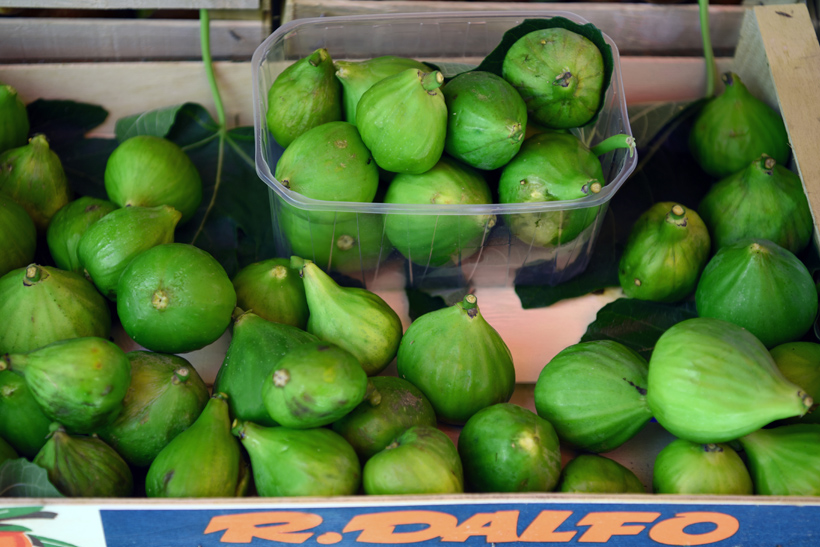
But wait, there are three major crops that were excluded from these statistics:
- Potatoes: What country doesn’t grow potatoes? Even though Croatia is a minor producer on the global scale, the 2016 production of 193,000 tons (source here) dwarfs all the other vegetable crops in the country.
- Grapes: Similarly, Croatia may only occupy the 45th rank worldwide in terms of grape production, but with 116,000 tons in 2017 (see here), this is hands down its largest fruit crop by weight. A lot of these grapes are used to make some fantastic wines, in particular in Istria and on the Pelješac peninsula.
- Olives: With 28,000 tons produced in 2019, olives too are one of the country’s most important crops, even if it’s only the world’s 23rd largest producer (statistics available here). Croatia makes some excellent olive oils, like the ones I tried at Pet Bunara.
Next time, we’ll go from Zadar to Zagreb, Croatia’s capital city, and take a look at Dolac Market!
